5 Home Exercises That Build More Muscle Than Gym Workouts After 50
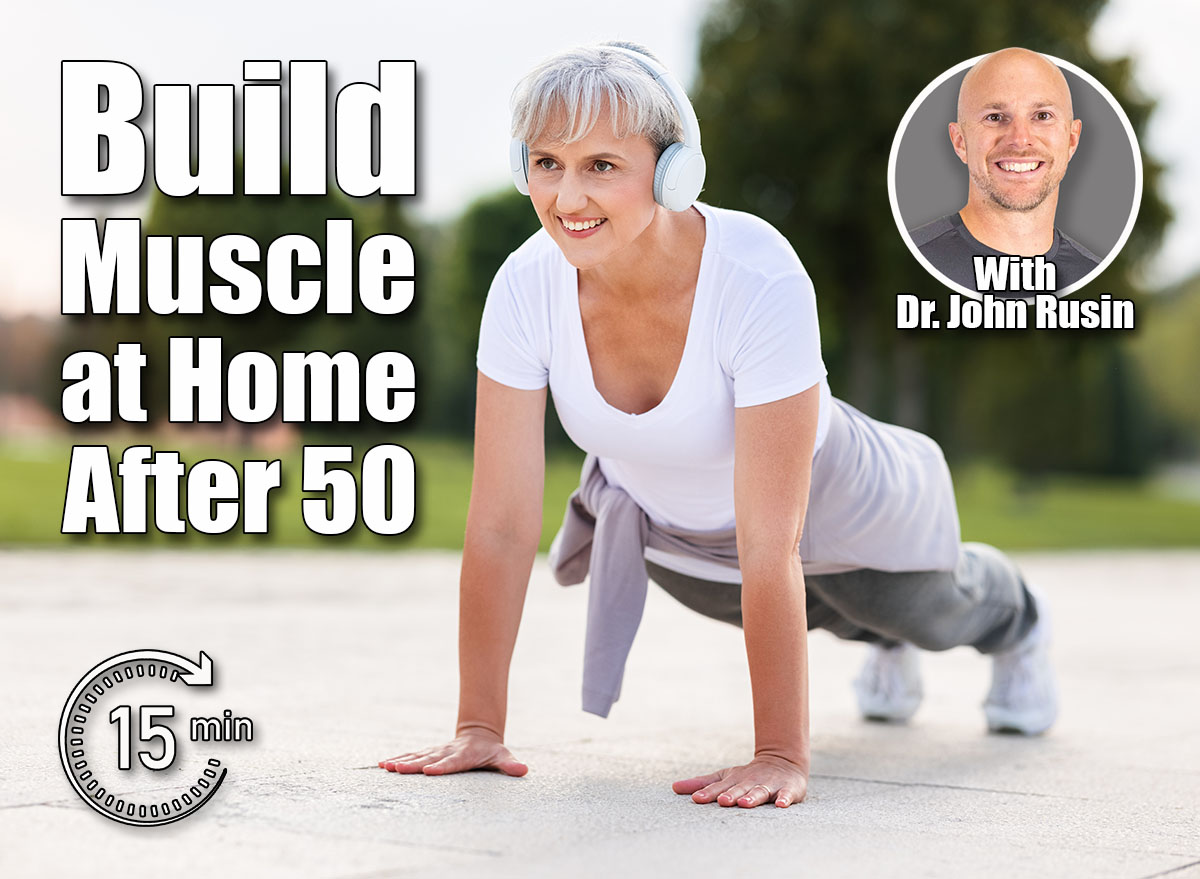
Many people believe that once you hit 50, it’s time to slow down and avoid challenging workouts. However, strength training becomes even more crucial as we age, not less important. The good news? You don’t need an expensive gym membership or fancy equipment to build serious muscle after 50. I’m Dr. John Rusin, an internationally recognized strength coach and injury prevention expert with nearly two decades of elite-level training experience and advanced degrees in both exercise science and physical therapy. Read on to discover five powerful home exercises that can deliver better results than traditional gym workouts, plus expert guidance on how to perform them safely and effectively.
The Biggest Muscle-Building Challenge You Face After 50
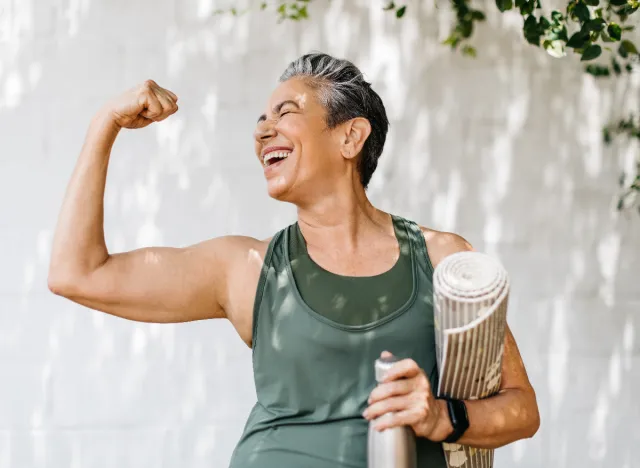
One of the biggest limiting factors to building muscle in the 50+ year old population is their avoidance of progressive resistance training. There’s a misconceived thought out there that as you get older, you should avoid lifting weights, especially heavy ones. But in both the best available science and my personal anecdotal experience as a coach managing thousands of clients over the last 2-decades, I can attest that the truth is actually the opposite. Strength is the most important, dare I say vital, of all physical characteristics to train, maintain and gain as we pass our 50th birthdays. And at home? It doesn’t always have to be the heavy iron. Unconventional tools that offer real resistance as a stimulus for muscle and strength enhancement such as bands, kettlebells, dumbbells and bodyweight movements can absolutely work. The key? We train them hard and close to technical failure (proper form where you cannot complete another great looking rep) allows the resistance stimulus to work for us, and helps us get stronger, build muscle and gain the most out of our workouts.
Why Home Workouts Can Beat the Gym
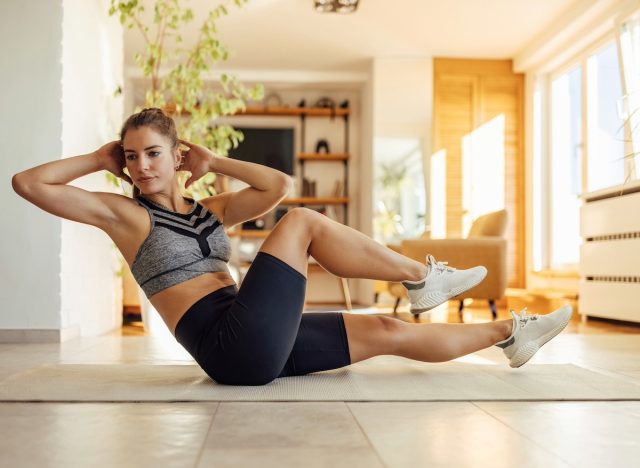
There is an extreme accessibility advantage to bodyweight training. You’ll never be limited to equipment, location, or even time for that matter. Bodyweight exercises, when done correctly and pushed hard, can be the muscle and strength stimulus that this population needs. The body doesn’t necessarily know the difference between forms of resistance, for example a barbell vs your bodyweight. But in order to make bodyweight workouts comparable to gym based equipment workouts, we need to train with technical proficiency, train close to failure and accrue enough intensity and volume to drive strength and muscle adaptations.
5 Home Exercises to Build Muscle After 50
Bodyweight Squats
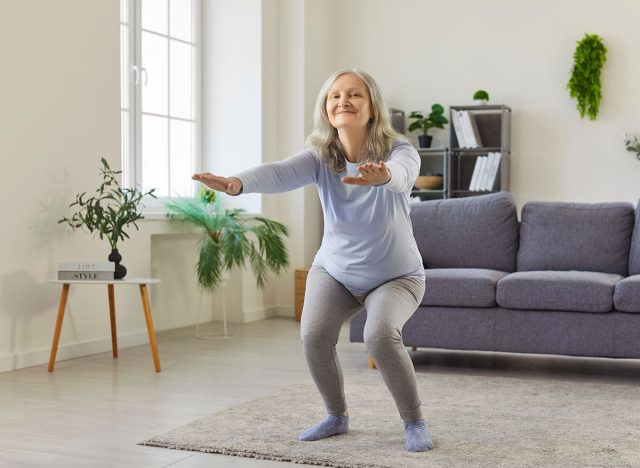
How to do it: Place your feet shoulder width apart, toes slightly out. Push your hips back and bend at the knees lowering into a squat with neutral spine and control of the entire body. Drive your feet into the ground to push back up tensioning the glutes, hamstrings and quads at the top and repeat.
How often: 2-3x/week.
Easier version for beginners: Use hand assist if you cannot bodyweight squat.
Common mistakes: Rounding the back, bending at the hips only, and loss of foot position.
Push Ups
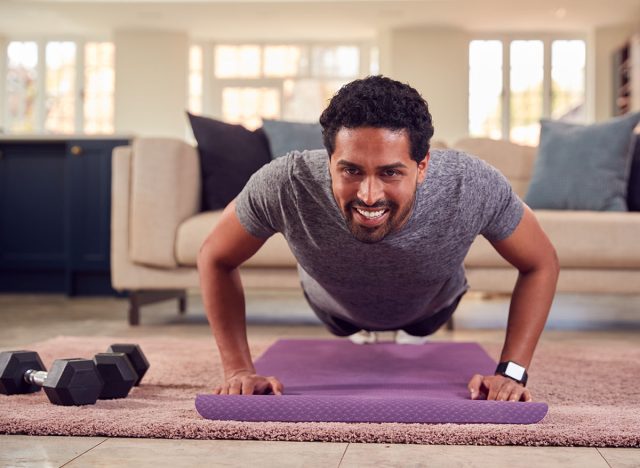
How to do it: Place your hands shoulder width apart, legs straight, body tensioned and gripping the ground actively. With a neutral spine and straight line of the body, push your hands into the ground, straightening the elbows and drive your chest away from the floor. Lower the same way you went up under control.
How often: 2-3x/week.
Easier version for beginners: Elevate the hands.
Common mistakes: Hyperextension of the lower back (loss of core control).
Pull Ups
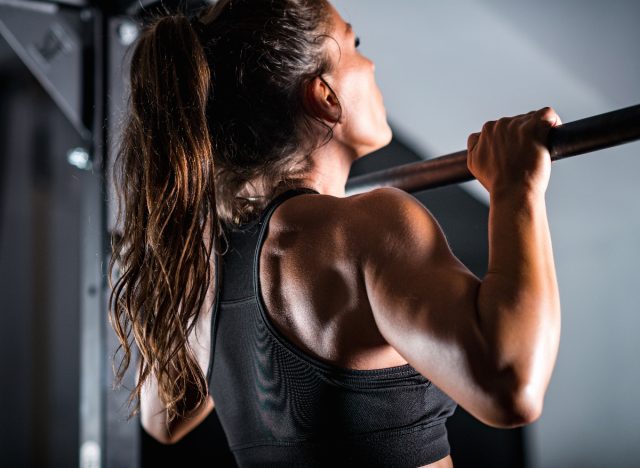
How to do it: Get your hands on a sturdy pull up bar, or elevated surface you can hang from. Keep an active core with alignment at the spine and lower body. Drive your chin up over the bar, and lower under control.
How often: 2-3x/week.
Easier version for beginners: Use a lower angle of pull, more like an inverted row.
Common mistakes: Rounding the back, momentum from the legs, loss of core control.
Step Ups
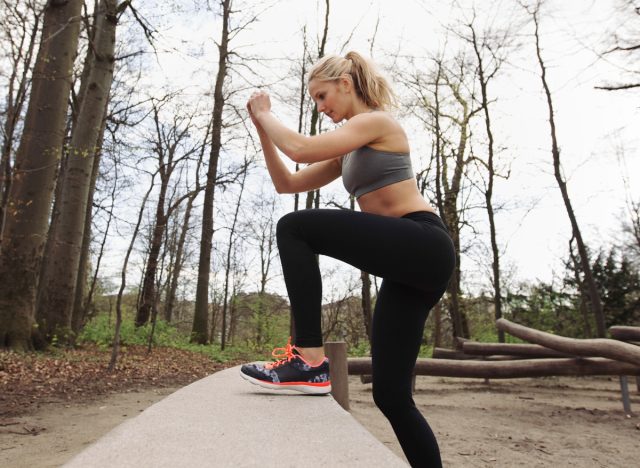
How to do it: Setup an elevated surface 12-16 inches high. Step up onto the surface with one foot, and step up utilizing your quads, glutes and hamstrings. Lower slowly under control and repeat for the opposite side.
How often: 2-3x/week.
Easier version for beginners: Use hand assist if you cannot step up fully. Lower step also works.
Common mistakes: Pushing up with bottom foot, taking muscle emphasis away from top working leg.
Reverse Lunges
How to do it: Start in a standing position, then step behind you with one leg, lowering down into a lunge with knee and hip hinging simultaneously. The back knee will graze the floor and then step back up into the starting position, utilizing your quads and glutes.
How often: 2-3x/week.
Easier version for beginners: Use hand assist if you cannot bodyweight reverse lunge.
Common mistakes: Loss of balance, spinal neutral, and coordination.
How to Structure Your Weekly Routine
You can place these 5 movements into a functional strength circuit training them all for a duration of time, but preferable to failure with a rest period between. They can also be trained individually in 2-4 straight sets to failure with 1-min rest between.
The Role of Protein and Recovery
Protein is pivotal. Shoot for 0.8-1.2 grams of protein per pound of bodyweight.
What Results You Can Expect
You can absolutely shift your body composition in 2-3 months of regular, consistent training with hard work behind it. The amount of muscle gained or fat lost? Will depend on your nutrition, your quality of training, and your recovery.
Getting Started If You’re New to Home Workouts
Embrace the change. It will be different than a gym-based workout, but different doesn’t mean worse. Finding a consistent routine with low barriers of entry is the goal here.
Dr. Rusin is the author of Pain-Free Performance: Move Better, Train Smarter, and Build an Unbreakable Body.